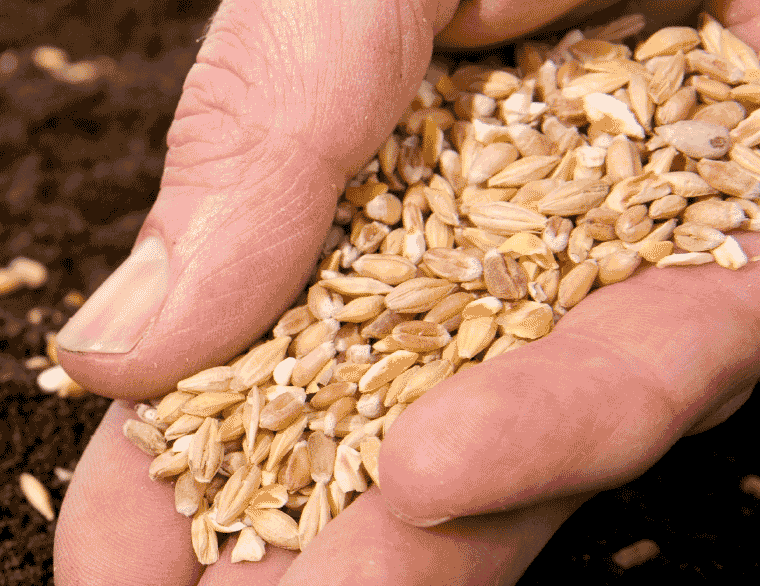Advanced grain storage management
PREVENTING MYCOTOXIN DEVELOPMENT
mycotoxins are coming under increasing scrutiny by global trade regulators in grains destined for segments of the food sector. Mycotoxins are chemicals that fungi produce naturally as they invade plants and these toxins can be harmful to humans and animals through dust exposure during grain handling or when consumed in food.

The two mycotoxins that will have the greatest impact on trade for grain coming from Ontario are deoxynivalenol (DON) produced by Fusarium graminearum and ochratoxin A produced by Penicillium verrucosum (OTA). Farmers producing grains destined for food processing, especially for the breakfast cereal and infant food markets, are going to find that more attention will likely be given to grain quality as it is delivered from the farm.
how mycotoxins are produced
DON levels in grain are mainly determined before grain is dried and stored. To manage DON, grain producers are generally well aware of the role of variety selection (grow less susceptible varieties), fungicides (spraying at flowering time), and crop rotation (do not plant wheat following corn). However, you might not be as aware of the impact a delayed harvest, leaving damp grain in the wet tank too long, or drying grain too slowly will have on DON accumulation before it is in good storage condition. The best recommendation is to harvest grain when it is mature, dry it quickly and keep it in good condition.
OTA levels in grain are mainly determined by conditions during which the grain is stored. We have confirmed that Penicillium spores come from grain that has been in contact with soil, such as grain that has lodged, or been flattened by sprayer tracking when spraying during wheat heading. However, we have also confirmed that Penicillium spores can be found in many places along the harvest and storage path. The first line of defence, therefore, is cleaning all harvest, handling and storage equipment of dust, debris and old grain before it is used.
The most important problems that we have found lead to OTA development are condensation and small leaks allowing rain to enter into the bin. OTA is measured in and regulated at very small amounts (“parts per billion” rather than “parts per million”). Just a few kernels of grain can be highly contaminated, and almost impossible to find by sampling the grain; yet they can result in a finished product that is off-spec.
prevention
Producers are generally well aware of how to keep grain in overall good condition during storage through monitoring, timely aeration, turning grain, and the use of aerated floors. We call this macro-management and we are good at it. It is important to keep up this good work and not become complacent.
According to the Canadian Grain Commission, data collected each year from their monitoring program shows that the levels of ochratoxin A in our grain are generally below international limits. 81 percent of the samples their researchers tested from 1994 to 2010 had less than one part per billion (1 ppb) of ochratoxin A; the average amount for all samples was 0.8 ppb.
However, to prevent OTA, the devil is in the details and it requires a different level of thinking or micro-management. During a recent three-year survey, we found OTA in several parts of the grain bin – mostly on farms with modern and well maintained storage facilities.
The most important area we discovered OTA was in the top centre of the grain pile, below the grain down spout from the leg. We traced this back to the down spout acting like a chimney during the first big cold snap of winter when the producer turned on the fans to cool the grain down. Warm damp air escaping up the down spout (chimney) condensed and dripped onto the top of the pile. A solution for this problem is to plug the down spout so air is exhausted properly out of the vents. This should be included in the design of the bins before they are constructed.
We found clumps of grain with OTA at main access points, especially the manhole. To prevent them from forming here, clean and seal these areas carefully and design the bins so the access points are less exposed to driving rain.
Clumps of grain can also form in bin seals and at holes where bolts are missing or not tightened (yes, even in a brand new bin). A regular inspection and immediate fix of any bad seals or holes will reduce the potential for problems in these areas.
The bottom edges and corners of the bin as well as augers and the auger bottom were also found to contain contaminated grain. This is left over grain and emphasizes the point that residual grain and grain debris needs to be removed from all parts of harvest and handling equipment before any new grain is handled.
With tightening mycotoxin regulations looming, it is important now than ever to pay more attention to storage details, especially for grain destined for food markets. The bottom line is producers need to keep things clean and dry, even at the micro level.
Markets may emerge for grain that has received this special attention and one might consider planning and designing ahead. •







